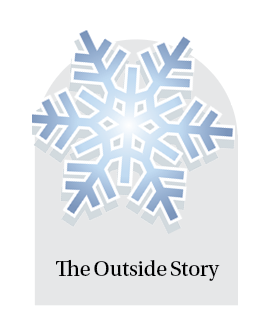
In the cosmic dance of heavenly bodies, no phenomenon possesses the drama of a solar eclipse, when the moon passes directly between the sun and earth. In the path of totality, where the moon completely obscures our home star, the world falls into an ominous darkness that has evoked everything from wonder to dread. This year, our region will experience a total solar eclipse on April 8.
For any specific geographic location, “total solar eclipses are extremely rare events,” said Amanda Leith, education coordinator at the McAuliffe-Shepard Discovery Center in Concord, New Hampshire. “The next time we will see a total eclipse in New Hampshire won’t be until May 1, 2079.”
The most recent solar eclipse in which New England was in the path of totality was in 1970, and totality then was visible only in Nantucket and the southeastern tip of Cape Cod. Before then, Maine was within an eclipse path of totality in July of 1963, and parts of New Hampshire and Massachusetts were in October 1959. Vermont has not experienced totality since Aug. 31, 1932, and according to NASA’s website, there will not be another major total eclipse in the U.S. until Aug. 12, 2045, when the path of totality will start in northern California, arc across the southern states, and end in Florida.
On April 8, 2024, the eclipse maximum (when the largest portion of the sun’s disc is hidden behind the moon) will pass over northern New England during a span of about 8 minutes. It will begin in northern Vermont at 3:25 p.m. in South Hero, then at 3:26 in Burlington, 3:27 in Montpelier, and 3:28 in St. Johnsbury. It will start at 3:29 in Lancaster, New Hampshire, and 3:32 in Caribou, Maine. Eclipse viewers along the path of totality will see the moon block out all but the sun’s corona (outer atmosphere), which will appear as a faint glow around the edge of the moon’s disk.
“The duration of totality may last seconds to several minutes, depending on location,” said Catherine Miller, an observatory specialist in the Department of Physics at Middlebury College. “As you go farther away from the path of totality, the fraction of the sun that is blocked by the moon gets smaller.” When viewed from southern Vermont, New Hampshire, and Maine, the eclipse will block roughly 95% of the sun.
Many organizations are planning events to celebrate the eclipse. The Fairbanks Museum & Planetarium in St. Johnsbury, Vermont (fairbanksmuseum.org) will feature educational programs and a live video from NASA, plus a play-by-play description of the eclipse with Planetarium Director Mark Breen and Vermont Public’s Jane Lindholm. From April 6–8, the Appalachian Mountain Club (outdoors.org) will offer a full schedule of astronomical programming.
From making pinhole cameras to assembling a 9-foot Total Eclipse Puzzle, the McAuliffe-Shepard Discovery Center (starhop.com) is planning fun and informative eclipse-related activities and a Solar Eclipse Viewing Party from 12–5 p.m., April 8. The Center will also screen the film “Totality” at noon each Wednesday through Sunday through April 7. The Center’s “Countdown to the Eclipse” web page includes eclipse information, activities, and safety tips.
Safety is paramount, and eclipse viewers should never look directly at the sun when viewing the eclipse, which could burn the retinas in their eyes and cause blindness. Both NASA and the American Astronomical Society offer detailed safety information on their websites.
“Sunglasses, 3D glasses, and regular telescopes and binoculars will not protect your eyes from damage,” cautioned Leith. “The safest ways to look at the sun are with dedicated, safe solar eclipse viewers… and by looking at the eclipse indirectly, such as with a pinhole projector.”
Miller recalls viewing the partial eclipse of 2017 while working at the NASA Jet Propulsion Laboratory in Pasadena, California. “I remember looking at the ground beneath some trees where the sunlight was filtering through the leaves. Instead of seeing normal leaf shadows, I saw crescent shapes. The openings in the tree canopy were acting as pinholes, each creating an image of the eclipsed sun on the ground.”
Celebrating the solar eclipse is a way to share a mesmerizing experience with millions of people. It is a rare opportunity to behold a cosmic event that has enthralled humankind for millennia, inspiring story, song, and mythology from time out of mind.
Michael J. Caduto is a writer, ecologist, and storyteller who lives in Reading, Vermont. He is the author of “Through a Naturalist’s Eyes: Exploring the Nature of New England.” The Outside Story is assigned and edited by Northern Woodlands magazine and sponsored by the Wellborn Ecology Fund of the New Hampshire Charitable Foundation: nhcf.org.




